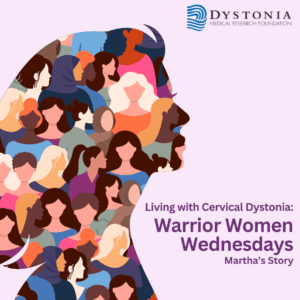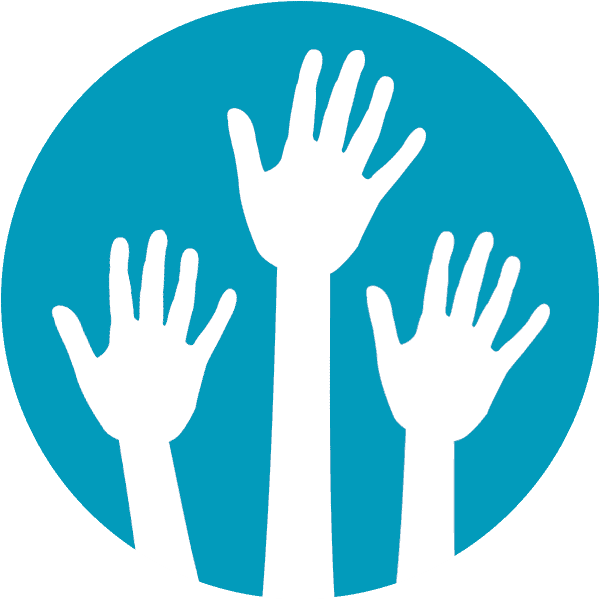Living with Cervical Dystonia: Martha’s Story

In honor of International Women’s Day on March 8, this month the Dystonia Medical Research Foundation (DMRF) is recognizing women with cervical dystonia whose perseverance is nothing short of awe-inspiring. Their stories will be featured in a four-part series called Warrior Women Wednesdays.
Cervical dystonia is a type of dystonia that affects the neck muscles, causing involuntary head and neck movement. While cervical dystonia—also known as spasmodic torticollis—can occur in people of any age, it most commonly begins after age 30 and affects women approximately twice as often as men. This week, we’ll hear from 72-year-old dystonia support group leader Martha M. She shared her story with the DMRF with the hope that her treatment experiences and strategies for keeping a positive mindset can help women like her navigate their own cervical dystonia journeys.
Finding a Treatment That Works and Staying Positive
A seemingly endless journey to diagnosis
Martha’s journey with cervical dystonia began nearly five decades ago when she was just 23 years old. What initially seemed like a simple stiff neck—annoying but manageable—gradually progressed into something far more challenging. “Over time, I began having difficulty turning my neck to the right, I had a lot of pain, head pulling to the left, head jerking, headaches and balance issues,” she shared.
For twelve long years, Martha searched for answers. She consulted numerous physicians and specialists, but none of them could determine the cause of her symptoms. Rather than being misdiagnosed, she remained undiagnosed, caught in the frustrating cycle of uncertainty. It wasn’t until Martha met a neurologist who recognized the signs of cervical dystonia that she finally received a definitive diagnosis. While the diagnosis brought relief, it also came with the sobering realization that cervical dystonia was not an easy disorder to treat.
Trial and error with treatments
Martha’s initial treatment plan included oral medications, but they only made her symptoms worse. Seeking further relief, she received injections from a specialist, unaware that he lacked much experience in treating cervical dystonia. Instead of alleviating her pain, the injections intensified it. “That was a scary time because the pain was so intense that I’m not certain if he hit nerves or what,” she recalled.
Eventually, Martha was prescribed another oral medication that provided relief for five years—until she began experiencing panic attacks. “It turned out that the oral medication I was taking had depleted my serotonin levels causing fight-or-flight syndrome. So I had to wean myself off of that oral medication, participate in counseling and group therapy and finally was free of that.”
After Martha weaned herself off of the oral medication, she received botulinum toxin injections for a few years until they started to become less and less effective. At that point she joined a clinical trial for a new neurotoxin in a double-blind, placebo-controlled study. The experience was enlightening, and the treatment proved effective for her. “That toxin worked pretty well for me, and I received those injections for approximately 24 years,” she noted. In 2021, Martha stopped receiving injections and ceased taking oral medications, managing her symptoms with Tylenol due to additional arthritis in her neck.
Staying positive through it all
Martha’s message to other women living with cervical dystonia is to—above all else—try to maintain a positive outlook on life. “You need to find the joy every day, even in the littlest of things. Don’t focus on what you cannot do, or do as well as you used to do. Focus on what you can still do. We make a decision every day what our day is going to be like, so make sure that you choose for it to be a positive one, no matter what life might throw at you! And if you’re having a difficult time that day, remember that there is always tomorrow and that things will be better,” she shared.
At 72 years old, Martha continues to make a difference in the dystonia community as a part-time staff member for the DMRF and as a support group leader. “I enjoy helping others and trying to be supportive of them on this journey, and I know that they inspire me. There are so many courageous people who I have met throughout the years with dystonia, and I admire them so much.”



